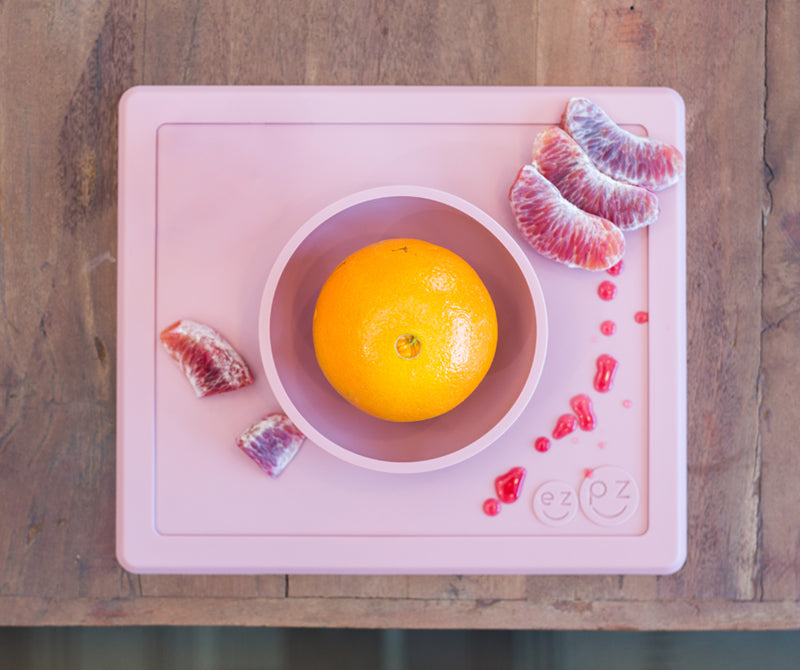Oranges have powerful antioxidants that can ward off illness and keep your family healthy this winter. Have you tried offering oranges to your child and they refuse to eat it? This may be due to the type of orange you used. Some oranges are too tart, and others are too juicy for your child’s oral motor skills (which may not be advanced enough to handle multiple textures). Here are some expert tips on how to introduce oranges to your toddler.
Peeling: Selecting the right type of orange is critical for success with picky eaters, and my three favorites are the navel, Valencia and blood orange. Regardless of the orange you present, consider peeling the orange or teaching your child how to peel without squirting the oils of the orange into their eyes. I’ve had a several kiddos refuse to eat an orange after being sprayed in the face!
Navel Orange: The name and shape of the navel orange is so fun! When I teach children about this type of orange in feeding therapy I like to show off the “belly button” of the orange (it’s the cutest little navel!). Kids love that it has a belly button, and they usually start showing off their belly button too, which of course leads to tickling, laughter and then eating!
Expert Tip: The taste of a navel orange is sweet, and it’s a great first orange to try (and peel).
Valencia Orange: This orange is typically what parents offer to their kids for the first time. In my experience, it’s also the orange that causes kiddos with motor feeding challenges to choke (and then they may refuse to eat any citrus). The Valencia orange is very juicy, and for kids who have difficulties with multiple textures, this orange is challenging because of the over abundance of juice, pulp and skin. So, to avoid choking and gagging, I start these children with a navel orange. Or, I slice it with some of the outside skin on so kids can hold on to the edge and use their teeth to pull out the juicy goodness.
Expert Tip: The texture of a Valencia orange is wet and juicy, so it’s perfect for teaching kids how to squeeze and make their own orange juice.
Blood Orange: When I introduce this orange to my boys in feeding therapy they love the fact that the word ‘blood’ is in the name. They usually think it’s the coolest fruit to eat and enjoy showing off its bloody juices! But with my female clients, they are a bit more squeamish about the name and some have refused to try it. So, with them, I’ve had more success calling it the red orange. Then, after she learns to eat and enjoy it, I reintroduce the orange with the appropriate name. I think this is important because I strongly believe that accurate food education will equip our children with the life long skill of being an adventurous eater!
Expert Tip: The taste of a blood orange is sweet and its juice is red, which makes this fruit perfect to spice up desserts, salads, juices and smoothies.
I hope these tips will help you pick the right orange to introduce to your toddler! What are some ways you add oranges to your child’s mealtime? What is your toddler’s favorite type of orange and how do you serve it? #ezpzfun #orange #toddler



